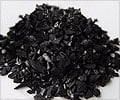China have officially launched a post-combustion capture pilot plant in Beijing that strips carbon dioxide from power station flue gases in an effort to stem climate change.
The CSIRO (Commonwealth Scientific and Industrial Research Organisation) and its Chinese partners have officially launched a post-combustion capture (PCC) pilot plant in Beijing that strips carbon dioxide from power station flue gases in an effort to stem climate change.
The project represents another first for the CSIRO PCC program - the first capture of carbon dioxide in China using a PCC pilot plant.It begins the process of applying the technology to Chinese conditions and evaluating its effectiveness.
PCC is a process that uses a liquid to capture carbon dioxide from power station flue gases and is a technology that can potentially reduce carbon dioxide emissions from existing and future coal-fired power stations by more than 85 per cent.
The post-combustion research pilot plant at the Huaneng Beijing Co-Generation Power Plant is designed to capture 3000 tonnes per annum of carbon dioxide.
According to Dr David Brockway, Chief of CSIRO's Energy Technology Division, the project was part of a broad program to identify ways to significantly reduce greenhouse gas emissions from the energy sector.
"Given the world's reliance on coal, we need to find ways to make it a cleaner energy source. We're delighted to be working with our partners in China to help find solutions to this global challenge," he said.
Advertisement
The PCC project will focus on assessing the performance of an amine-based pilot plant under Chinese conditions.
Advertisement
"The next steps in the research would be moving to a much larger demonstration phase, before then progressing to a full scale system," he added.
Source-ANI
SRM











